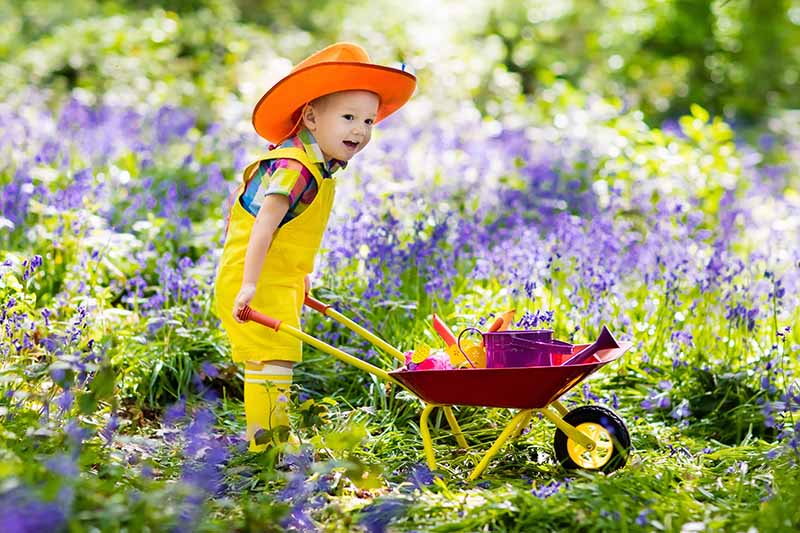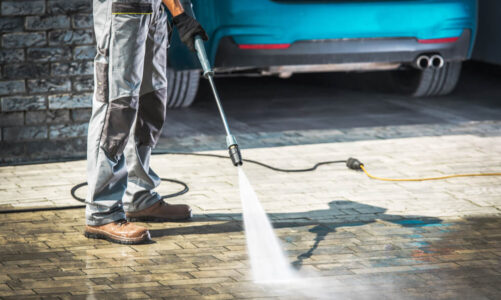Introduction
When you start any landscaping project topsoil is a priority. It contains a lot of nutrients and allows seeds to germinate. If you want to turn your old barren lawn into a lush green patch quickly you can search for “landscape companies near me” and hire a professional. However, before you do that you need to figure out the amount of soil you need for the lawn. Let’s figure out how you can do that:
The Topsoil
- The importance of topsoil – If you’re new to gardening you may not be aware of the importance of topsoil. However, it is the most important layer of soil for growing plants. Topsoil has a favorable structure, water infiltration, and aeration to allow plants to develop healthy roots and grow to their full potential. It’s extremely vital for grass since it’s a water and nutrient-hungry plant that spreads shallow roots.
- The amount of soil necessary for plant growth – Irrespective of the planting method you use, you’ll need a lot of topsoil for growing grass. Whether you use sod, plugs, or seeds the soil condition is a big factor that decides the health and growth of your new lawn. All the grass planting methods require at least 4 to 6 inches of topsoil to grow healthy. Depending on the soil condition of your yard, you may need to amend it with compost or other materials.
Now that you know the necessary depth of topsoil for grass it’s easy to calculate the total amount of topsoil necessary for your lawn. You need to convert the depth measurement into feet. That means 6 inches of topsoil becomes half a foot of topsoil. You already know the length and breadth of your yard. Multiplying the length, breadth, and depth gives you a rough measure of the total volume of topsoil you need.
You can even use online calculators to change the unit to cubic yards from cubic feet. However, make sure to account for waste and get more topsoil than the calculated amount. The depth of topsoil is measured after it has firmed and settled. You also need to source decent-quality topsoil for your lawn. Don’t get the unseeded topsoil that has gravel and other aggregates. That’s great for filling up holes in the yard, but not for grass.
- Prepare the land – Now that you know about the amount of soil, you’ll need for your lawn it’s time to prepare the site. You need to grade the lawn so that you can keep water from flowing towards your home, garage, and other buildings on your property. You need to create an incline of around 1 to 4 percent.
If you have a large property, you may need to use heavy equipment like bulldozers and tractors. However, if you have a relatively small yard, you can get it done with a shovel, rake, wheelbarrow, and plenty of elbow grease.
After you grade the soil, spread a 4 to 6-inch layer of high-quality topsoil on the site. As mentioned above, the depth measurement doesn’t concern loose topsoil. It is the depth of spread topsoil after it has been firmed and settled on the graded land.
- Improve the soil – You can never get the perfect topsoil for your needs. However, you can amend it according to your requirements. For instance, if you have a high concentration of sand or clay in your topsoil, you can add nutrient-rich organic matter to improve it. This doesn’t just increase the nutrient content of the soil. It also improves the soil structure and improves drainage, water infiltration, and makes it less susceptible to soil compaction.
When you amend the soil to improve drainage and water retention you won’t need to waste hundreds of extra gallons of water on irrigation. To amend the soil, you can get compost or peat moss. Both are high-quality organic matter. Spread a two-inch-thick layer of organic matter over the 4 or 6 inches of topsoil and work it into the soil with a rototiller.
You can also get the soil tested by a local soil-testing laboratory to figure out if it needs more amendments like potassium, phosphorus, and lime to rid the soil of nutrient deficiency and change its acidity.
- Seed your lawn – After you prepare the topsoil, seeding is the most cost-effective way of growing a healthy and lush patch of green. However, the grass type differs depending on the time of the year. For instance, if it’s late August or September it’s best for cool-season grass. On the other hand, the summer months of May, June, and July are best for warm-season grass.
You need to distribute the seeds evenly on the soil with a lawn spreader. This kind of convenient machine distributes one half of the seeds in one direction and another half in the opposite direction. After the seeds are spread, grab a handbrake and work the seeds into a quarter-inch depth of the soil.
After the lawn surface gets rolled, you need to mulch it with one bale of straw for every 1000 square feet. You’ll also need to water the lawn several times throughout the day to keep the soil nice and moist till the seeds are germinated.
- Sod planting – Unlike seeding, sod is an expensive way to grow a lawn. However, it’s also much faster and works best for warm-season grass. Water the topsoil and lay the sod over it. After that, you need to spray the sod and soil with water and keep them wet till the sod is put in place. After that lay the sod plugs half an inch apart and you should see grass growing in between them very soon.
Conclusion
Now that you know about the depth of topsoil necessary for grass you can easily buy the right amount and prepare your land to grow a lush green patch. Otherwise, you can search for “landscape companies near me” and hire a professional to do it for you.




